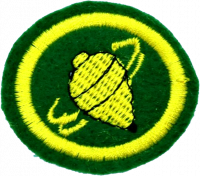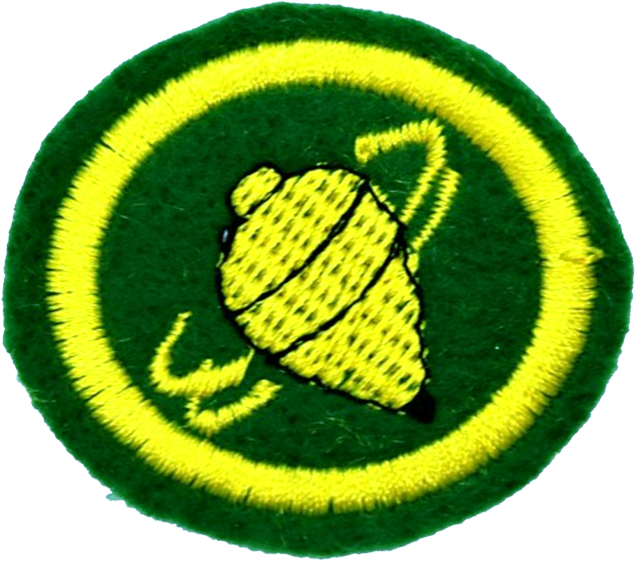Difference between revisions of "AY Honors/Tops/Requirements/pt-br"
(Created page with "</noinclude>Tippe Top <noinclude>") |
(Created page with "</noinclude>Desenhe e explique como funcionam os seguintes tipos de pião: <noinclude>") |
||
| Line 84: | Line 84: | ||
<noinclude></noinclude><section end=req8d /></b> | <noinclude></noinclude><section end=req8d /></b> | ||
| − | <b>9. <section begin=req9 /><noinclude> | + | <b>9. <section begin=req9 /><noinclude></noinclude>Estabelecer e seguir junto a seu instrutor um código de segurança para a prática de jogos com piões, com no mínimo 5 regras. |
| − | </noinclude> | + | <noinclude></noinclude><section end=req9 /></b> |
| − | <noinclude | ||
| − | |||
| − | <b>10. <section begin=req10 /><noinclude> | + | <b>10. <section begin=req10 /><noinclude></noinclude>Utilizando um pião tradicional, demonstrar habilidade em completar as seguintes atividades: |
| − | </noinclude> | + | <noinclude></noinclude><section end=req10 /></b> |
| − | <noinclude | ||
| − | |||
| − | :<b>a. <section begin=req10a /><noinclude> | + | :<b>a. <section begin=req10a /><noinclude></noinclude>Força e Equilíbrio: enrolar corretamente a fieira e lançá-lo de modo que gire pelo tempo mínimo de 20 segundos antes de perder o equilíbrio. |
| − | </noinclude> | + | <noinclude></noinclude><section end=req10a /></b> |
| − | <noinclude | ||
| − | |||
:<b>b. <section begin=req10b /><noinclude><div lang="en" dir="ltr" class="mw-content-ltr"> | :<b>b. <section begin=req10b /><noinclude><div lang="en" dir="ltr" class="mw-content-ltr"> | ||
Revision as of 18:32, 10 June 2021
1. Realizar e apresentar uma pesquisa com cerca de 300 palavras sobre a história dos piões.
2. De que materiais eram feitos os piões da antiguidade? E de que diferentes materiais eles são feitos hoje em dia?
3. Explicar cada um dos seguintes métodos de impulsionar um pião:
- a. Fricção
- b. Corda ou fieira
- c. Mola
- d. Dedos
4. Desenhar um pião identificando as seguintes partes:
- a. Castelo, selo ou tacha
- b. Ponteira, bico, garrocha ou ferrão
- e. Corpo ou massa
5. Desenhe e explique como funcionam os seguintes tipos de pião:
- a. Pião tradicional de madeira
- b. Pião de dedo, carrapeta, ou pião de haste-longa
- c. Tippe Top
- d. Brummkreisel
- e. Perinola
6. Sobre o uso de fieira (ou cordel) explique:
- a. Qual o tamanho ideal da fieira?
- b. Qual a importância de prender a extremidade no dedo?
- c. Cite 3 formas de prender a fieira no dedo.
7. Qual a utilidade da tampografia nos piões tradicionais?
8. Explique a relação entre a estabilidade, movimentação e queda do pião, com os seguintes conceitos físicos:
- a. Velocidade angular
- b. Efeito giroscópio
- c. Centro de gravidade
- d. Princípio da dinâmica (la lei de Newton)
9. Estabelecer e seguir junto a seu instrutor um código de segurança para a prática de jogos com piões, com no mínimo 5 regras.
10. Utilizando um pião tradicional, demonstrar habilidade em completar as seguintes atividades:
- a. Força e Equilíbrio: enrolar corretamente a fieira e lançá-lo de modo que gire pelo tempo mínimo de 20 segundos antes de perder o equilíbrio.
- b.
Calculated technique: Throw the top, then pick it up in the palm of the hand; after a few seconds, return it to the ground and it must keep spinning.
- c.
Put to sleep: Make the top spin for 10 seconds in one place so that it appears to be stopped.
- d.
Spinning on the crown: Spin the inverted top by by the crown.
- e.
Sliding: While the top rotates, with the help of the string, move the top from one place to another without it falling.
- f.
Accuracy: Throw the top on a target. It can be a line or circle on the ground.
11.
Do at least one of the following maneuvers:
- a.
Roll in the air: Consists of throwing the top, and before it reaches the ground and before the string is unwound completely, bring it back in such a way that the top spins in the hand.
- b.
Bridge or cable car: With one hand, hold both ends of the string and with the other hand hold the remaining fold. Keeping the string static, place the top on it and lift one end of the formed bridge and slide the top from one end to the other.
- c.
Throwing: As the top spins on the floor, make it jump at its tip, pulling the cord with skill and strength, serving as a boost. Do this twice, once with it jumping and falling to the ground, and the other falling onto the hand.
12.
Know or create at least four collective games with spinning tops. Invite the members of your unit to participate in each of the games. In the end, talk to the instructor about how you felt during the activities and what are the advantages of the practice of outdoor recreation.



